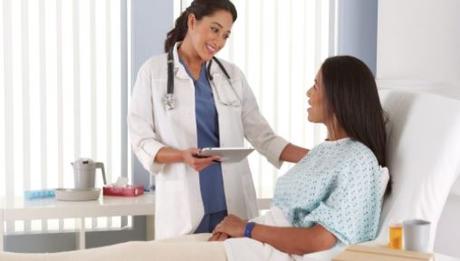Who is a gynaecologist/Gynecologist?
Patients with female reproductive organs, whether or not they identify as women, are treated by a gynecologist. A gynaecologist who specialises in pregnancy and childbirth is known as an obstetrician.
Dr Shweta Shah, one of the best gynaecologists and obstetricians, discusses the significance of seeing a gynaecologist in this article. She has a decade of obstetrics and gynaecology experience.
When may I see a gynaecologist and at what age?
At any age, a gynaecologist can treat a girl or a woman. But generally, it starts from the age of 13 to 15.
Developing a rapport with a doctor allows a girl or woman to feel more at ease when asking questions about menstruation, sexuality, and other topics.
It also allows the doctor to help a woman’s general well-being in the long run by providing advice on crucial health and lifestyle issues.
What is a gynaecologist’s role?
Throughout their pregnancy, doctors monitor and care for women with high-risk pregnancies who may experience bleeding or infection, as well as those who have gestational diabetes or kidney infections.
Women must be checked for several diseases and problems, as well as receive regular gynaecological guidance on a variety of issues. STD (sexually transmitted diseases) testing is also provided.
What are the advantages of consulting a gynaecologist?
According to Dr. Shweta Shah, To keep your reproductive system healthy, you should see a gynaecologist at least once a year, starting in your teens and continuing throughout your life.
Some of the subjects that a woman should discuss with her gynaecologist include:
Fertility and pregnancy are linked to menstruation.
Menstruation occurs at different times in a woman’s life, depending on her body’s health and various stages, including pregnancy.
PCOS (polycystic ovarian syndrome), fibroids, breast illnesses, and gynaecological anomalies should all be discussed with a gynaecologist.
Once a woman is sexually active, she should discuss family planning, contraception, sterilisation, and other reproductive matters with her gynaecologist.
What can you expect?
What happens at the gynaecologist is determined by the cause for the visit as well as the circumstances of the individual.
If this is a young woman’s first visit, she may only want to speak with the doctor, get some basic health information, and learn what to expect in the future, says Dr. Shweta Shah.
It’s important to remember the following on every visit to the gynaecologist:
A candid explanation of your health concerns and lifestyle provides the gynaecologist with a greater understanding of your situation, allowing them to better assist you.
A gynaecological examination, which includes a pap smear, can be unpleasant but is rarely painful. It is not essential to wax or shave before your appointment.
Bodily odour is a normal part of life. The gynaecologist must be informed if it indicates an issue.
You can still go to the appointment if you have a period when it is scheduled, but it may be advisable to postpone unless you have symptoms that require immediate treatment.
For two days before a gynaecological checkup, avoid sexual activity, using a vaginal douche, or using tampons.
A patient may ask to be accompanied to their appointment, either inside or outside the room.

Screening
Dr. Shweta Shah recommends seeing a gynaecologist at least once a year for an annual checkup.
This will include the following:
- screening, assessment, and advice
- vaccinations depending on risk factors and age
- A physical exam that includes taking your vital signs, calculating your BMI, and assessing your overall health
- A pelvic examination and a breast examination is done as suitable for the patient’s age
- A screening test may need you to produce a blood or urine sample.
- Regular visits to a well-woman clinic allow an individual to stay current on how to maintain a healthy lifestyle and reduce health risks at each stage of life.
- Mammography, colonoscopy, blood pressure monitoring, vaccinations, and advice on calcium and folic acid diet are all examples of yearly health checks.
Typical techniques:
Certain diagnostic and surgical procedures are taught to ABOG-certified gynaecologists.
The following are examples of diagnostic tasks:
- Colposcopy, a microscopic inspection of the cervix endometrial biopsy (or)
- Obtaining a sample from the uterine lining hysteroscopy, the use of an endoscope to see within the uterus.
Surgical tasks include the following:
- Getting patients ready for surgery
- A keyhole abdominal procedure is called laparoscopy. both as a diagnostic and surgical tool
- Minor surgery, such as sterilisation, major surgery, such as uterine fibroids removal, and postoperative care, such as addressing problems
- Other surgical problems, such as small bowel blockage, can also cause them to become involved.
Also Read
Hip fractures in older people: Types, Treatment, Issues & Prevention
**SP**
